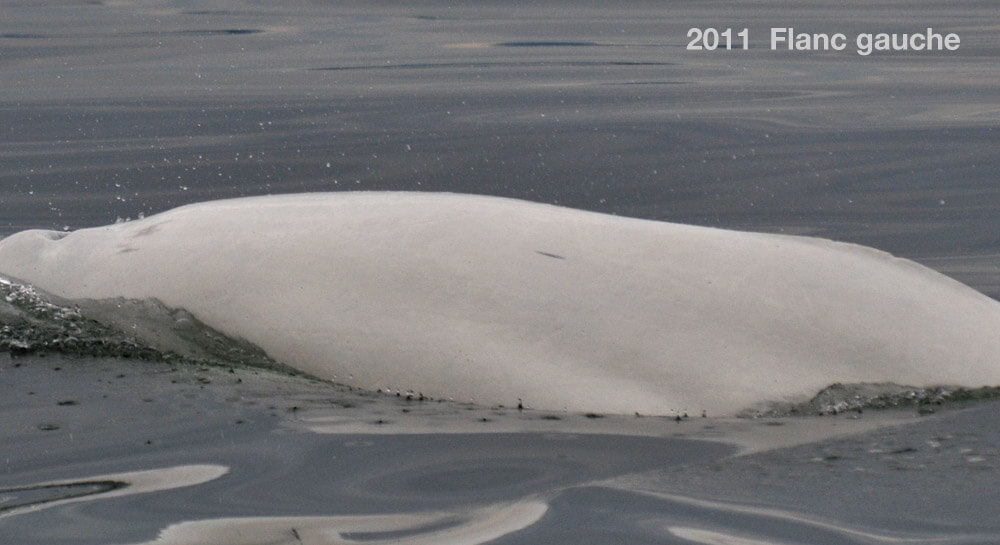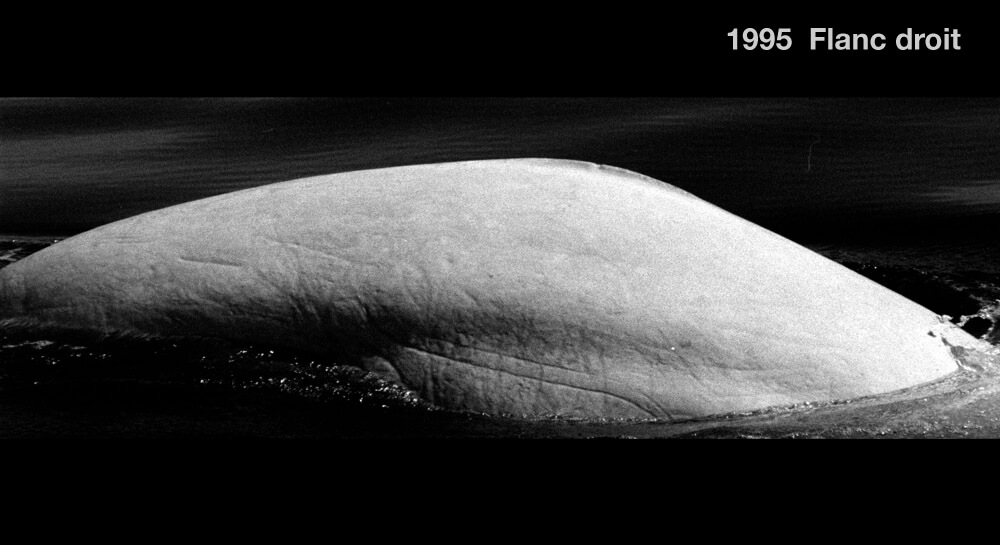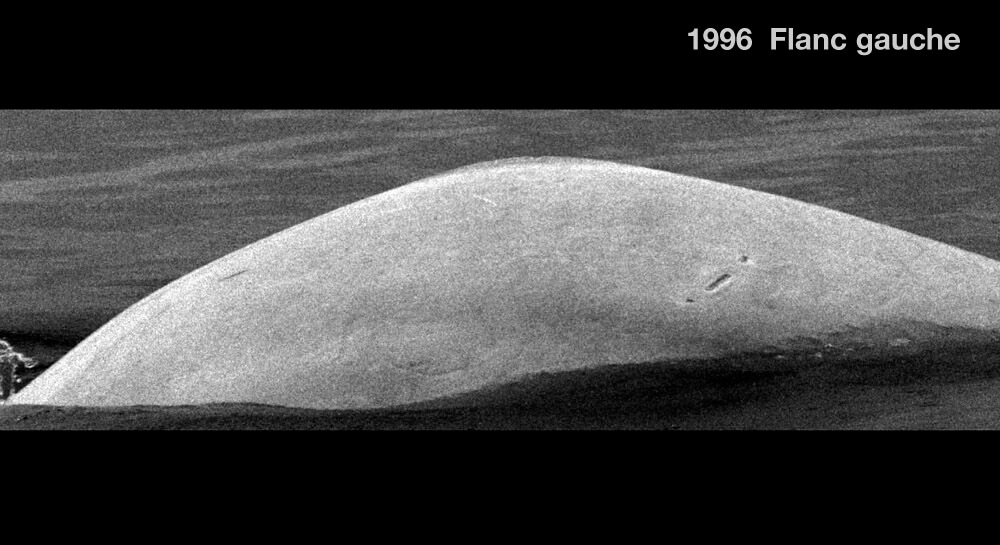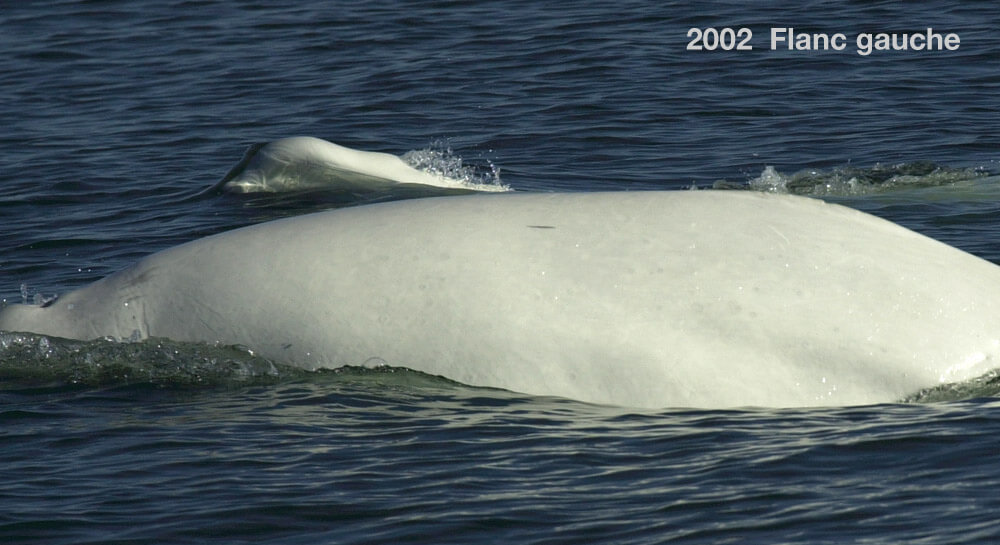Bonheur
Beluga


Adopted by Dawn L. Duquet
-
ID number
DL0476
-
Sex
Female
-
Year of birth
Before 1990
-
Known Since
1994
Distinctive traits
Bonheur’s left flank bears very different markings: gray spots on her head, a small gray line in front of the ridge and three scars just before the peduncle. For the right flank, we use the details of the dorsal ridge.
Life history
Our very first encounter with Bonheur dates back to 1994. At the time, it was a juvenile beluga whale. Over the years, its coloration has faded and since 2002, it has been almost perfectly white. In 2011, it was completely white. Bonheur would have been born in the early 1990s.
Bonheur is a female; her sex is confirmed by a biopsy, the genetic analysis of a tiny piece of skin taken from her back. For the moment, we can’t yet determine which community of Bonheur females belongs to. In summer, there is strong sexual segregation among adult beluga whales. Both males and females show marked preferences, both in their associations and in the areas they frequent. In juveniles and young adults such as Bonheur, this behaviour is not as marked.
Bonheur is a female. How do we know this? Through a biopsy. A tiny piece of fat and skin, containing the animal’s genetic secrets, is removed with a crossbow that shoots a dart with a stinger. GREMM has been conducting biopsies on belugas since 1994 to identify their sex and family ties.
Observations history in the Estuary
Years in which the animal was not observed Years in which the animal was observed
Latest news
We were cruising along the mouth of the Saguenay, near the rivière aux Canards at Baie-Sainte-Catherine, when we spotted Bonheur in a flock of some 50 individuals, white adults and young grays. We also recognize DL0743, a male from the Saguenay.
The animals are very active. They dive and swim to the same spot over and over again, a behavior known as “miling”, which is often associated with feeding. The mouth of the Saguenay is a meeting place! Networks of male belugas come across herds of females with young. Gatherings form here, ephemerally, due to the abundance of food.
Our boat is located on the north shore of the maritime estuary between Tadoussac and Rivière-Portneuf. We observe a herd of some twenty individuals, and Bonheur is among them. The herd is made up of adults and young. They spend their time diving in and out of the water. The water is very clear, so it’s impressive to watch them move around like this. Among the herd, we spot a small group of females. They’re easy to spot because they’re small and round. Close to the boat, we hear a loud breathing noise, but can’t spot the individual behind it – an unusual situation!
Sponsor
Dawn L. Duquet adopted Bonheur (2000).




